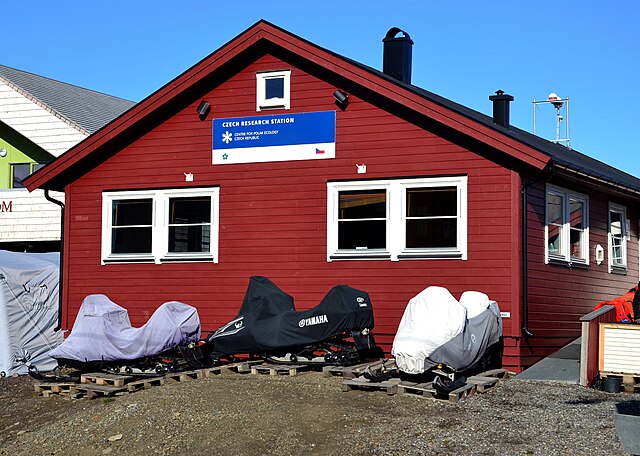Research stations in Antarctica
Multiple governments have set up permanent research stations in Antarctica and these bases are widely distributed. Unlike the drifting ice stations set up in the Arctic, the current research stations of the Antarctic are constructed either on rocks or on ice that are fixed in place.
"Omond House", the first permanent base, constructed in 1903 by the Scottish National Antarctic Expedition
View of Chile's Captain Arturo Prat Base, established in 1947
Research stations are facilities where scientific investigation, collection, analysis and experimentation occurs. A research station is a facility that is built for the purpose of conducting scientific research. There are also many types of research stations including: biological field stations, space stations etc. Research station sites might include remote areas of the world, oceans, as well as outer space, such as the International Space Station. Biological research stations developed during a time of European colonization and imperialism where naturalists were employed to conduct observations on fauna and flora. Today, the discipline is represented by a number of organizations which span across multiple continents. Some examples include: the Organization of Biological Field Stations and the Organization for Tropical Studies.
Czech Arctic Research Station
A wooden Bothnian Bay Research Station of the University of Oulu in Marjaniemi, Hailuoto, Finland
Kuroshima Research Station in Kuroshima, Okinawa.
International Space Station (ISS)






